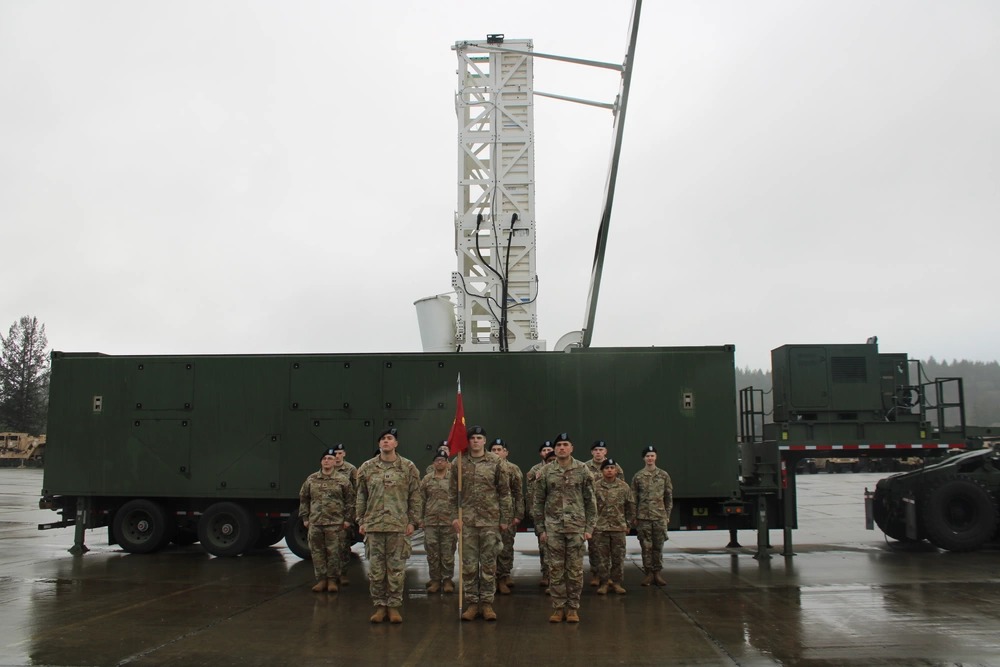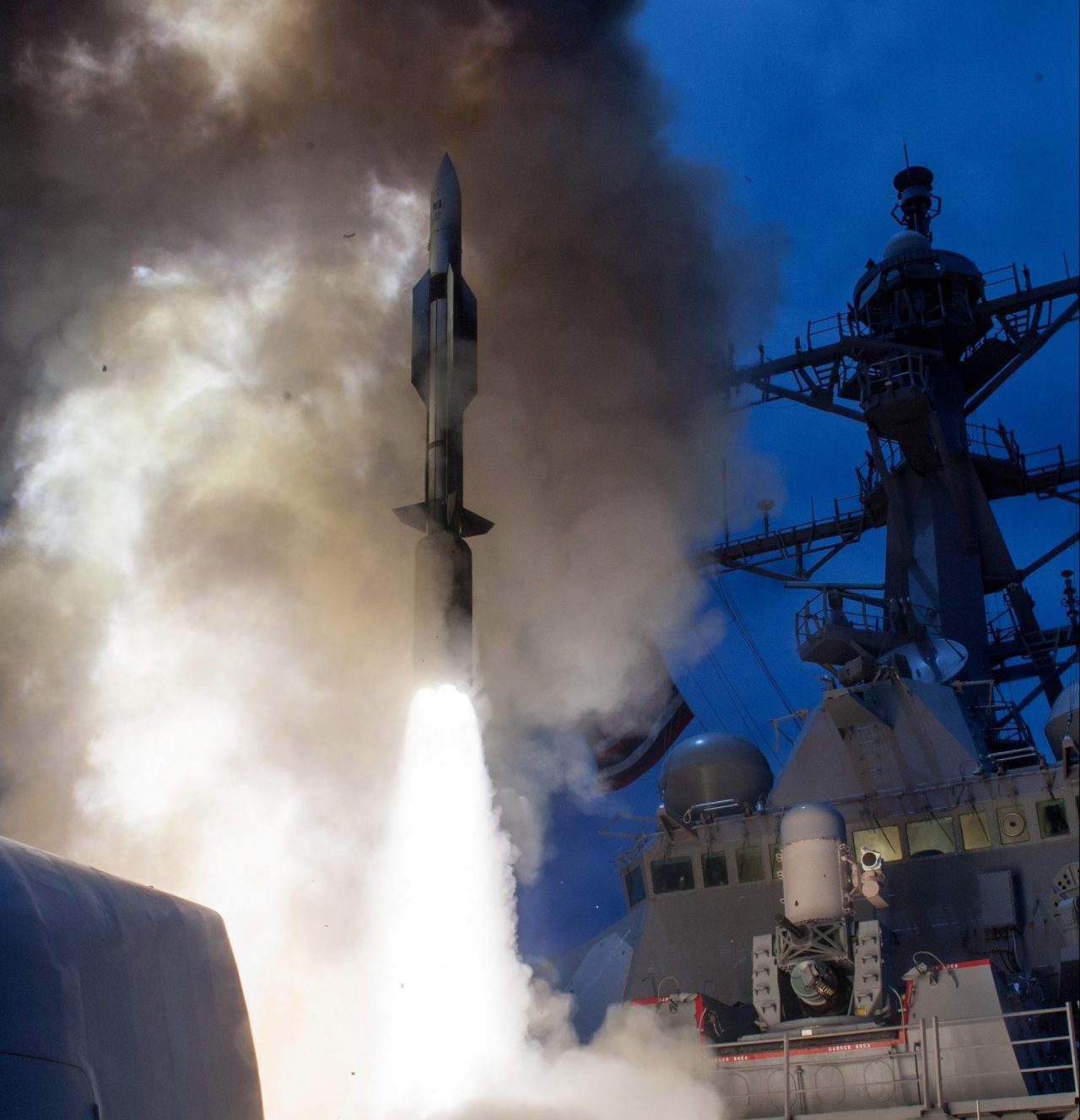This month, the US Army raised another Typhon Mid-Range Capabilities (MRC) land-attack missile unit for use in the western Pacific against China. The system, firing the SM-6 air defense missile, is repurposed for land strikes.
Along with the Tomahawk, the system bridges a range gap uncovered by the 500-km Precision Strike Missile (PrSM) and the 2000-km-plus range under-developed Long Range Hypersonic Weapon (LRHW).
During exercises, the US also deployed the SM-6 variant of the Typhon MRC in September 2023 on the Danish island of Bornholm in the Baltic Sea. While it is unclear whether the launcher is still in the feature, China and Russia have objected to the system’s deployment.
Moscow had notably argued that the US had long wanted to introduce the system and was only waiting for the collapse of the Intermediate-Range Nuclear Forces (INF) Treaty that prohibited the fielding of the system.
Official US literature suggests the MRC Typhon is not a standalone weapon that operates independently but complements other air and possible land actions on adversary militaries.
New Missiles’ Use
A press release identified the Delta Battery, 5th Battalion, 3rd Field Artillery Regiment, 1 Multi-Domain Task Force as the “second battery” that now operates an MRC Typhon system. This unit was raised at the Joint Base Lewis-McChord in Washington.
“The MRC Launcher can fire the Standard Missile – 6 (SM-6) and Tomahawk Land Attack Missile (TLAM). These missiles allow the Army to prosecute maritime and land targets in support of multi-domain operations,” the statement said.
It is unclear if this latest unit can fire either the SM-6 or the Tomahawk. But it would be prudent to assume that for flexibility purposes and given the dynamic nature of threats presented in the event of a conflict with Russia or China, a unit would have both missiles at its disposal.

Possibly, the unique region and the location of the battery might decide a slightly higher number of either of the two missiles. For instance, the SM-6 also possesses anti-ship capability, making it more suitable for forward locations facing naval threats.
In this case, it could be China or Bornholm. Bornholm can also hold a few Tomahawk Typhon units to strike the Russian Baltic exclave of Kaliningrad. But the Pacific seems to primarily be the focus, based on statements of US Army officials.
“The activation of Delta Battery, 5-3 FA expands our Long-Range Fires Battalion capacity to support our Joint Indo-Pacific Mission – providing a credible, land-based maritime strike capability. Elements of this battery are already projected to operate in the Pacific later this year,” Lt Col Blane, commander of the 5th Battalion, 3rd Field Artillery Regiment, was quoted in one report.
The exact location in the Pacific, however, remains a mystery. US Army Pacific commander General Charles Flynn told journalists on the sidelines of the Halifax International Security Forum in November 2023 that the Typhon will be deployed to the Indo-Pacific in 2024.
“We have tested them and have a battery or two of them today. In 2024, we intend to deploy that system in your region. I’m not going to say where and when. But I will say that we will deploy them,” Flynn said.
However, the Typhon MRC’s missiles and the dynamics of their composition and location are purely in the realm of speculation, considering the US Army has released very little information on the system and even the first battery that was activated.
What Is The Typhon System?
The Tomahawk and the SM-6 are a part of the Typhon system, where the missiles are fired from the Mk.41 universal launchers to strike China and Russia’s forward bases. The Tomahawk version of the Typhon was test-fired late in June 2023. The naval version of the land-fired Tomahawk was unveiled a month later in July.

Meanwhile, the SM-6 version of the Typhon was “rehearsed” in its road-mobile form in September 2022 under the US European Command, EurAsian Times reported. The rehearsal showed containers on articulated trucks claimed to be carrying the SM-6.
The MRC/Typhon system bridges the range gap between the 482-kilometer range of Precision Strike Missile (PrSM) and the 2776-kilometer range of the US Army’s hypersonic Long-Range Hypersonic Weapon (LRHW). In other words, it requires missiles to reach targets up to 1,800 km away.
Interestingly, the Tomahawk and the Naval Strike Missile (NSM) – of the Navy/Marine Corps Expeditionary Ship Interdiction System (NMESIS) – are part of a larger US Marine Corps (USMC) island-hopping strategy of firing anti-ship missiles on Chinese warships from friendly nations’ islands in the South and East China Seas.
The NMESIS, too, undertook its third test-firing earlier in July 2023.
- The author can be reached at satamp@gmail.com
- Follow EurAsian Times on Google News




